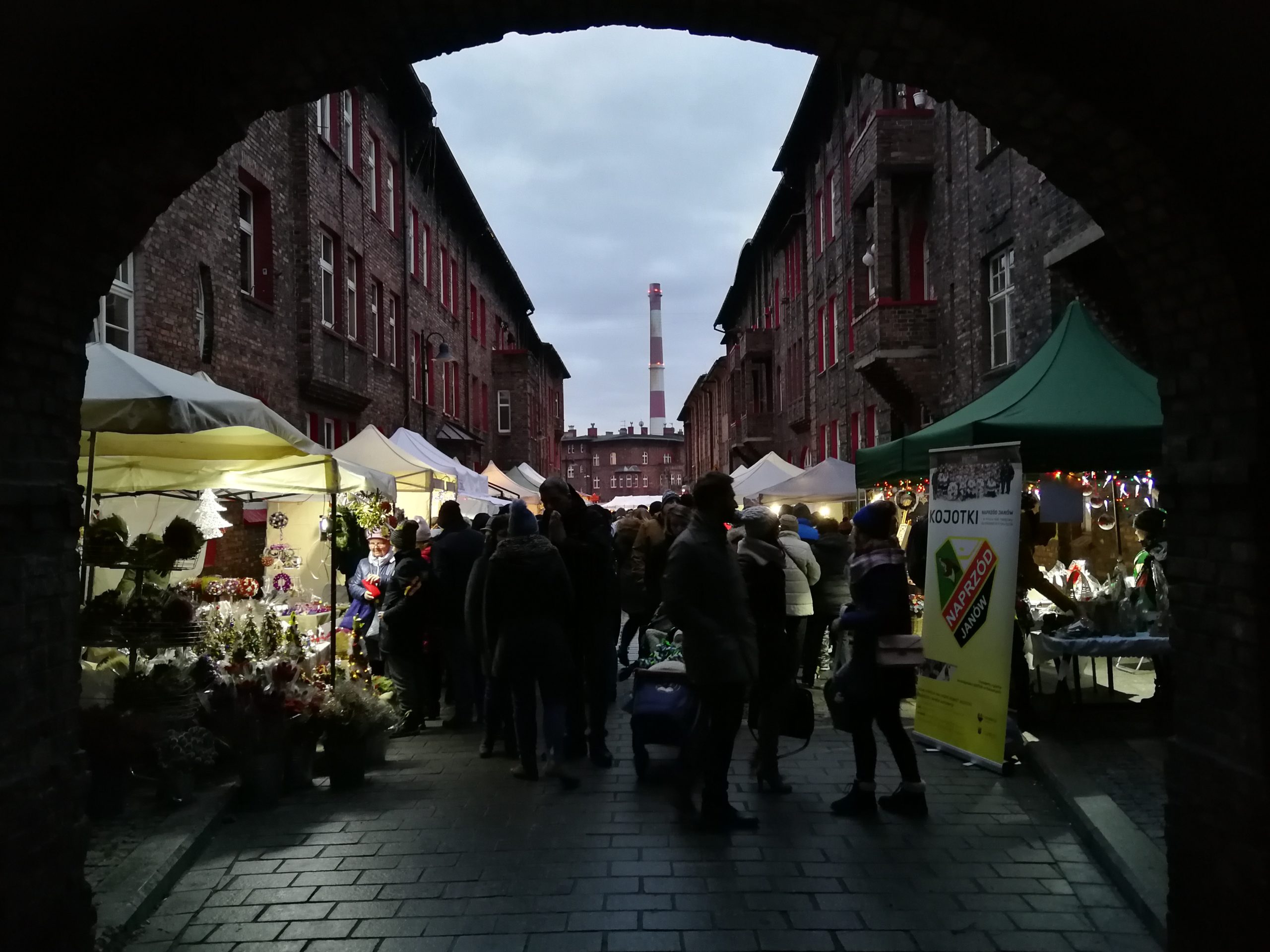“My name is Greta Thunberg. I am 15 years old. I am from Sweden. I speak on behalf of Climate Justice now.”
It was here in Katowice in December 2018 that Greta Thunberg’s fight for Climate Justice took over the world’s stage. It was here at the UN COP24 that a little girl from Sweden stood up for the right to live of all current and future generations. It is here in Silesia that people have lung diseases, that people even stay inside on some days only because the air outside is so bad that you inhale poison when you leave home.
According to a report by the World Health Organization published in 2016, 33 of the 50 most polluted places in the European Union are in Poland. Most of them can be found in Silesia. On some winter days you can really see the heavy gray clouds of smog hanging over your heads and making the sun seem like it lost its power. However, that does not only look bad, it also is very dangerous. About 700 people in Katowice die every year because of air pollution according to Katowice mayor Marcin Krupa.
But is the situation in Poland so bad? Are the Polish greenhouse gas (GHG) emissions that much? How is it in comparison with other countries in Europe? What does the government do to improve the health of Polish citizens? How will Poland fight against Climate Change in the future?
First, I will give a general overview on the Polish GHG emissions. At the moment, Poland is responsible for 1% of the global GHG emissions. This doesn’t sound much at first, but keep in mind that Poland is only home to around 0,5% of the world’s population. So, as you can see Poland emits twice as much as the world’s average. However, in comparison with most EU countries, Poland is average. Nonetheless, this is mainly due to the underperforming industry, which still lacks behind other Central and Western European countries, but which is growing on a stunning 5% rate every year. Therefore, you can see that Poland’s economy is one of the least carbon-efficient in the EU and the economic growth would lead to an increase in emissions if there were no measures being taken.
Indeed, the energy demand is growing at a rate of 1,2% a year. However, the GHG emissions per capita are only slightly rising in recent years. This is mainly due to remnant of Poland’s planned economy past, which have been responsible for a huge part of the Polish GHG emissions and which have been tackled in the years after the change to market economy. Underperforming and inefficient factories have been shut down because of their lack of competitiveness and bad infrastructure has been overhauled.
The biggest issue, however, still is Poland’s energy mix for the generation of electricity. Hard coal and lignite (brown coal) make up almost 80% of Poland’s energy mix, which is by far the highest share in all of Europe. This reliance on coal dates back to before 1989 when coal made up almost 100% of the energy mix. Since then, the share of renewable energy sources (RES) has grown to about 15%, half of it coming from onshore wind power plants. There has also been an increase in the usage of gas to foster the diversification in Poland’s energy mix.
The reason for this is that a diversified energy mix is necessary for a reliable power supply. While the reliance on coal used to be a sign of independence in the sector of energy production, this has changed in recent years. Experts say that Poland may run out of lignite until 2030 and hard coal reserves should only last a bit longer. But this is not only something far away in the future, Poland already needs to import more and more coal, so that this former factor of independence may soon turn into dependence. Moreover, coal has become less profitable in recent years, so that a switch to other energy sources has become not only environmentally, but also economically and strategically inevitable.
So, what does the government plan to do to tackle this issue? Although the current PiS government is not known for its pioneering spirit in the fight against climate change, these other factors made them act. To satisfy the growing energy demand, Poland needs to find new energy sources and therefore the government has come up with a plan, the Energy Policy of Poland until 2040 (EPP2040). This strategic paper consists out of eight fields on which they want to act and in the following paragraph I am going to sum up the main points.
- Optimal use of domestic energy resources: The Polish government claims that the domestic coal resources would be sufficient. However, they also plan the exploitation of new deposits. Another source that could be used locally is biomass, and there should be an increase in oil and gas exports according to the draft paper.
- Development of the power capacity and infrastructure: Here you can find the critical point of this strategic paper. The Polish government does not plan to reduce the use of coal. Instead, they want it to remain stable, so that the share of coal will decline because of the increase in energy consumption. This can be seen as a trick by the Polish government to please superficially both, the climate activists and the coal mining lobby. To satisfy this increasing need of energy, the government plans to invest in photovoltaics and offshore wind power plants. Also, an improvement of energy storage technologies and the transmission grid will be unavoidable.
- Diversification of natural gas and oil supply: Poland started a partnership with Norway and Denmark to build a gas pipeline. This would result in a decreasing dependency on Russian gas.
- Development of energy markets: The government wants to foster the liberalization of the energy market. Also, it wants to develop e-mobility with a set goal of one million vehicles until 2025.
- Launch of nuclear energy: The first nuclear unit is planned to be completed in 2033. Until 2040, nuclear energy should make up 15% of the energy generation.
- Development of RES: As already mentioned, the government plans to invest in photovoltaics and offshore wind parks, while it does not plan to build more onshore wind parks. It also wants to build more energy clusters and initiate cooperatives for a more efficient use. However, the target for 2030 is to have only a share of 21% RES, which falls way behind the EU target of 32%. The Polish government claims that this target is for the EU average, so that Poland can stay below this EU target, because of its unfavorable initial situation.
- Development of heating and cogeneration: A more centralized district heating is favored by the government. Also, the cogeneration in power plants should decrease the share of wasted energy.
- Improving energy efficiency: According to the draft paper, there are plans for more energy efficiency certificates to include external effects. Moreover, thermomodernizations of older residential buildings are planned.
In conclusion, the Polish government seems to have at least a plan for the future of Poland’s energy generation. However, this is only a plan and it is only possible to judge after concrete measures have been taken. The coal mining lobby is still very powerful in Poland and there are many jobs connected to this sector. Especially here in Upper Silesia, coal mining is an old tradition and it very important for the local culture. You can see the cultural heritage almost everywhere, no matter if you go to residential areas like Nikiszowiec or Giszowiec, or mines in Zabrze, Gliwice or Katowice. The transition to new energy resources therefore needs to be done carefully and the goals in the draft paper are already ambitious. The outcome in 2030 should be an improvement of energy-efficiency by more than 20% and coal making up only 60% of the energy mix. If Poland could really fulfil all the targets laid out in the EPP2040, this would be a huge step, as the starting point from an enormous dependence on coal differs from the situation in most other countries.
Speaking of other countries, it makes sense to have a comparison to really understand the situation in Poland. Therefore, I will compare Poland with Germany, the largest consumer in lignite, in terms of energy mix and GHG emissions in relation to the economy.


In the pie charts you can see that Germany’s energy mix differs immensely from Poland’s. While Poland relies heavily on coal, Germany has a diverse energy mix with RES being the most important source. Regarding the GHG emissions per capita, both countries are above EU average with a similar number. This can be explained mainly by two factors, the energy mix and the generated energy in total. As you can see in the pie charts, Germany’s energy mix is much more environmentally friendly than Poland’s, as the dependency on coal leads to high CO2 emissions. However, the total energy production of Germany with 605 TWh is more than three times the amount of Poland’s energy production. This leads to a similar amount of coal being used in both countries in total numbers and similar GHG emissions.
So, what conclusion can we draw from this comparison? There are three points standing out here. First, Poland really needs to change its energy mix because of the increasing energy consumption. While the energy consumption in Germany is decreasing and Germany can even export electricity, Poland will need to invest a lot in RES and nuclear power to satisfy the growing economy and its thirst for electricity. Second, Poland needs to become more energy-efficient by upgrading transmission grids and by improving cogeneration and thermoisolation. As both countries have similar GHG emissions per capita despite the much higher German GDP, Poland must become more efficient here to not finish up being dependent on electricity imports. Third, when looking at the energy consumption of different sectors in Poland, the only sector with drastically increasing emissions is transportation. In the last 15 years CO2 emissions more than doubled in this sector because of the exploding number of cars on Polish streets. This eventually leads to increasing GHG emissions per capita in Poland, while the number in Germany is decreasing.
To sum it up, the situation in Poland is definitely not the best, but that’s also due to the historic reliance on coal. Nowadays, Poland emits a lot of GHG in relation to its economy, because of the still coal-dependent energy production and the bad energy-efficiency. Moreover, the growing road transportation led to a heavy increase in GHG emissions in this sector. In the future, Poland needs to find new energy resources to provide the growing economy with electricity. Despite the lack of interest of the Polish government in Climate Change related issues, they act because of the economic and strategic need of changing Poland’s energy mix. If they also manage to increase energy-efficiency and to support climate-friendly transportation, there definitely is hope for an improvement.
But only then, if there’s a change of mindset and measures are being taken, only then, Poland will still be able to provide enough electricity for the growing economy. Only then, the air in Silesia becomes breathable again and most importantly, only then, we, the young people, young people like Greta will have a future.
Sources (helpful for further understanding): https://www.youtube.com/watch?v=VFkQSGyeCWg
https://siteresources.worldbank.org/ECAEXT/Resources/258598-1256842123621/6525333-1298409457335/chapterA.pdf
file:///C:/Users/putzb/Downloads/EN_Extract_EPP2040.pdf https://cop24.gov.pl/fileadmin/user_upload/files/2._Brief_overview.pdf
https://ec.europa.eu/eurostat/statistics-explained/index.php/Electricity_and_heat_statistics#Consumption_of_electricity_per_capita_in_the_households_sector
https://ec.europa.eu/eurostat/databrowser/view/t2020_rd300/default/table?lang=en
https://www.eecpoland.eu/2016/en/news/emissions-of-pollutants-greenhouse-gases-and-air-quality-in-polish-cities,336452.html
https://tvn24.pl/tvn24-news-in-english/polands-air-smoggy-as-ever-while-who-holds-conference-on-air-pollution-ra880532-2373818

